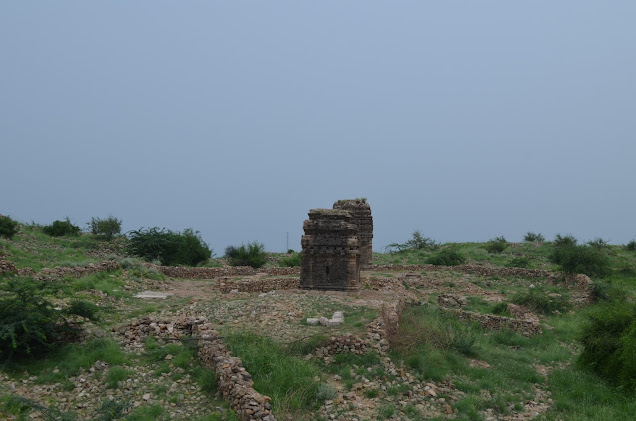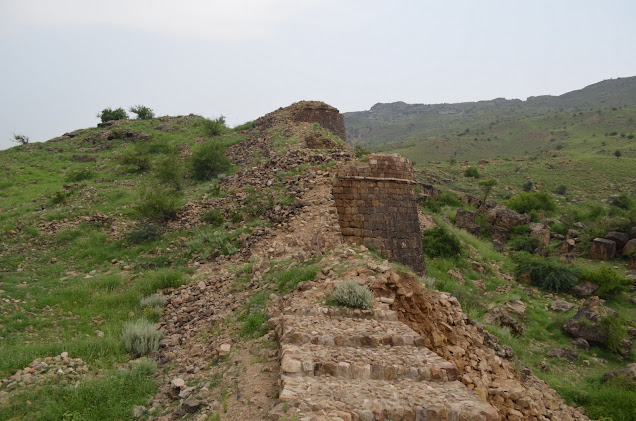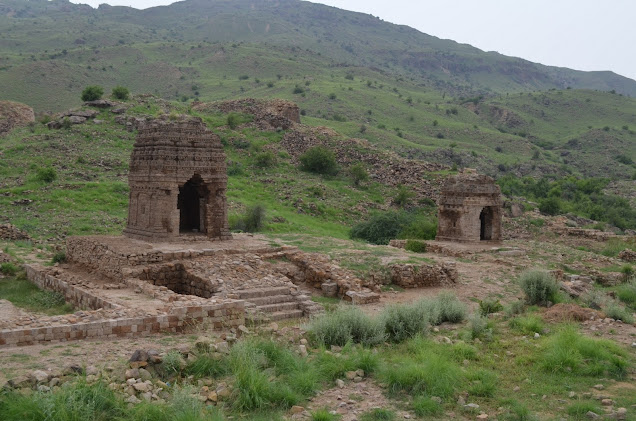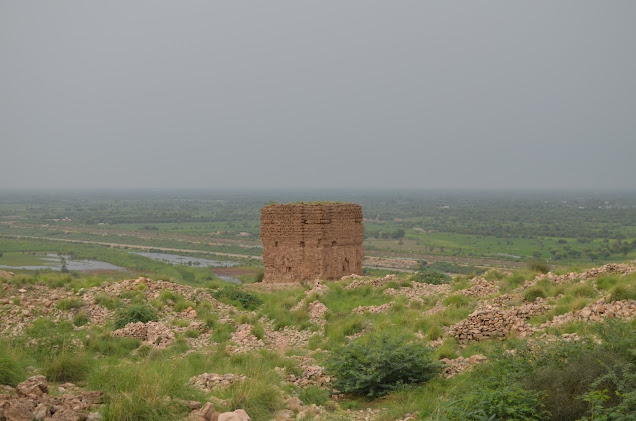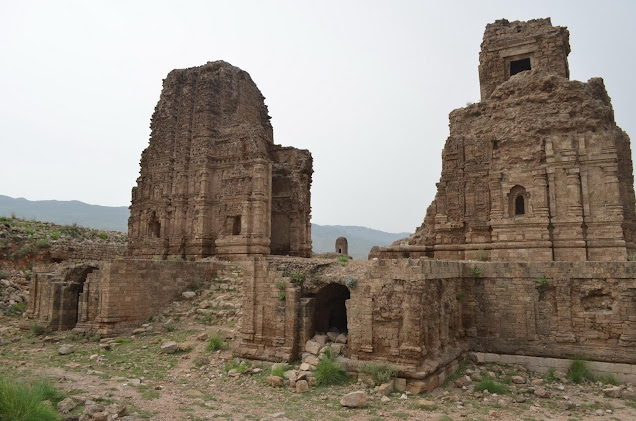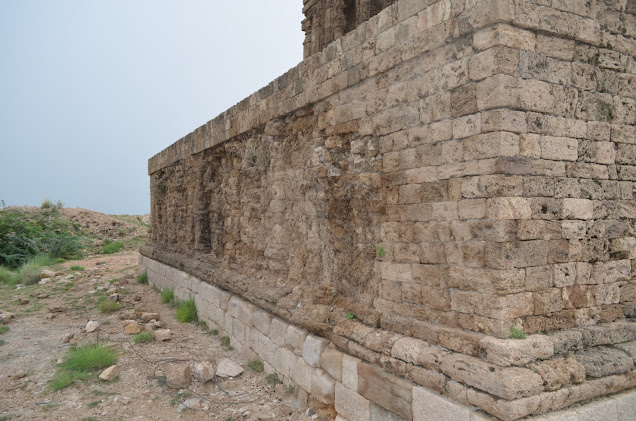Aryans migrated to India around 1500 BC and made the Indus Valley their home. For the next few centuries, they settled in the river valleys of Punjab before spreading towards the Ganges plains. This period is called the Vedic period, as the holy scriptures of the Hindu religion, known as the Vedas, were written during this time. This area hence became the cradle of Hindu civilization. For the next 25 centuries, it remained an important center of Hindu culture and religion, until the arrival of Muslims by the end of the 10th century AD.
During this time, many cities were built by them, with great temples as symbols of religion and culture. Some of the ruins of those ancient cities can still be seen in the Salt Range, at Nandana, Malot, Amb, and Mari Indus (for Malot and Amb, see my previous posts). In addition, there are temples at Kafir Kot and Bilout in District Dera Ismail Khan, which are considered extensions of the Salt Range temples. During my recent visit to these two places, I found them to be the best of all the temples in the Salt Range.
I seldom venture out of Punjab during my excursions, so entering Khyber Pakhtunkhwa was an added excitement. Though I was not expecting anything extraordinary. But frankly speaking, I was looking forward to a few glimpses of hardy Pathans with Kalashnikovs. I also regretted my inability to speak or understand any Pashto. But to my surprise, everyone was speaking in Punjabi or Seraiki, as they call it. It's the same language we speak in my native town, Lilla, in Tehsil Pind Dadan Khan. At first, I thought I had met labourers from Punjab, but soon realized that the whole population along the River Indus speaks Seraiki/Punjabi (they call it Seraiki).
My cousin Shah Sultan of Nali, District Khushab, was with me, along with another companion. We entered KP after crossing the River Indus at Chashma Barrage. A huge amount of water was gushing through the gates of the barrage with a big roar. The road passes right above the barrage.
After crossing the barrage, we turned right (northwards) towards Kafir Kot, our first point of interest. The distance to Kafir Kot is 7.3 kilometers from this turn. Soon we were on an almost deserted road, winding past hills on the left side and high banks of the riverbed of the Indus on the right. Contrary to my expectations, it proved a little difficult to locate Kafir Kot, despite having already marked the place on Google Maps. Actually, it is on top of the hills and not visible from the road. However, a few labourers clearing debris—left by recent rains—showed us a winding path leading up to the hilltop. The track was constructed just a couple of years ago, according to a local man, but the lower half is now completely destroyed by heavy rains and is nothing more than a heap of loose stones. The first one-third of the distance is particularly difficult, but the rest of the path is easier to travel. We parked our car beside the road and walked up the track. The distance from here to the gate of the city is approximately 630 meters. It was a cloudy and hazy, but humid, day, not suitable for photography.
What we saw on top of a plateau-type hill was nothing less than a complete surprise. I was expecting just ruins of a couple of old temples, but what we saw was a complete fortified city, with large parts of the walls still intact. Similarly, at least two of the four or five temples are in good condition, considering that they are more than 1,000 years old.
Even a layman like me soon realized that this is no ordinary place. It is a huge archaeological site, covering an area of approximately 27 acres, with a circumference of 1.6 km, located about 70 meters above the road. It is also evident that it has never been properly excavated or explored. Though we saw a few signs of preservation efforts, there was no evidence of large-scale restoration work. Nor did we see any board providing details about the site. We strolled around the ruins for nearly an hour and took some pictures.
Our next destination was the Bilout temples, about 35 kilometers to the south, towards Dera Ismail Khan city. We reached there in half an hour and found that this site is also located on a hill, nearly 60 meters above the surrounding ground. An additional problem was the flooded plains between the road and the hills. Luckily, we found an opening and reached the base of the hills. I was already tired from my mountain climbing at Kafir Kot, so this climb proved even more difficult, as there was no proper track leading to the top. Perhaps the better approach is from the eastern side, through Bilout town. Yes, unlike Kafir Kot, a thriving small town exists just east of this site.
The similarities between the two sites are striking, clearly indicating that both were inhabited during the same period and by the same civilization. This city, though smaller in size—with an area of approximately 21 acres and a circumference of 1.4 km, houses bigger and more beautifully constructed temples. The number of structures here is about seven.
Tariq Amir
November 11, 2015.
Doha - Qatar.







